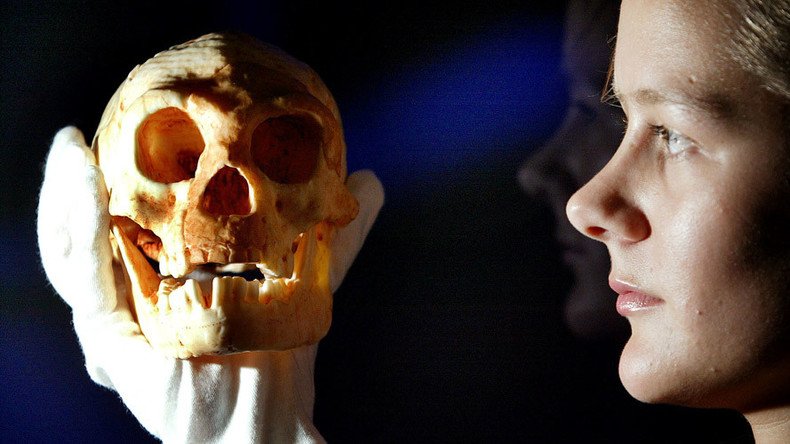‘Hobbicide’? Humans chief suspects in ancient ‘Hobbit’ genocide after teeth found in cave

The discovery of ancient teeth in a cave in Indonesia has linked humans with the extinction of the 3.5-foot (1.1-meter) tall species Homo floresiensis.
Colloquially referred to as hobbits, Homo floresiensis were quite similar to Homo sapiens in many ways. They walked upright and used tools, however they only grew to about a meter (3ft) tall and their brains were significantly smaller than those of ancient humans.
The species attracted the ‘hobbit’ nickname because of their short stature, large feet, and other similarities with the JRR Tolkien characters.
Remains of the mysterious hobbits were first discovered on the island of Flores in Indonesia in 2003 and scientists have been trying to determine what caused their demise, and who their ancestors were, ever since.
Following their discovery scientists had some trouble dating the hobbits, but work published earlier this year concluded that they became extinct around 50,000 years ago.
That work along with with the unearthing of a pair of 46,000-year-old teeth in Liang Bua cave on Flores may prove that humans were responsible for the downfall of their smaller brethren.
READ MORE: ‘Incredible’ 2,000yo skeleton found in ancient Antikythera shipwreck (PHOTO, VIDEO)
The discovery of the teeth, which was revealed at the European Society for the study of Human Evolution in Madrid last week, confirms that humans were on Flores shortly after the hobbits’ extinction.
It reinforces the idea that the species cohabited at some point in time and that humans potentially caused the hobbits’ demise, possibly by out competing their smaller relatives for resources on the island.
Nature reports that the upper premolar and lower molar teeth were discovered in 2010 and 2011 and carbon dated to around 46,000 years old using nearby charcoal.
According to the scientists carrying out the research there are several indications that the teeth belonged to humans and not Homo floresiensis. Most obviously they are larger than previously-discovered hobbit teeth.
However, more evidence is needed to reach a firm conclusion about the teeth's origins.
“What we don’t yet know is whether there was at least a short overlap in the populations, thus raising the question once again of the possible role of modern humans in the extinction of floresiensis,” Chris Stringer, a palaeoanthropologist at the Natural History Museum in London, told Nature.
Archaeologists are returning to Flores next year to carry out further investigations in the cave.












